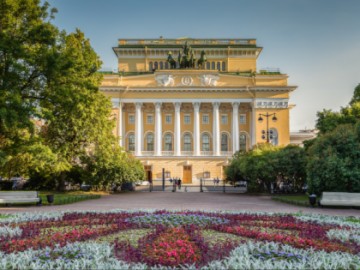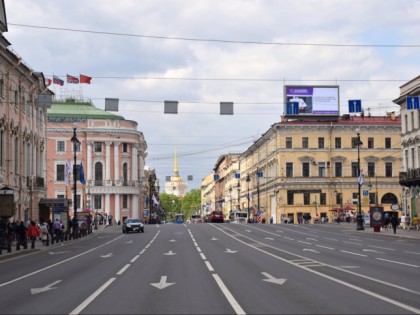Nevsky Prospekt and Three Rivers
Nevsky Prospect is the main street in St. Petersburg, laid by its founder, Emperor of Russia Peter the Great. This is the trade artery of the northern capital and the main promenade area for tourists. A total of 4.5 km long Avenue is crossed by three rivers - the Moyka River, the Fontanka River and the Neva River. Dozens of world-famous attractions are located in this space.
The area of Nevsky Prospekt between the Fontanka and Admiralteysky Prospekt is the most "elegant". Here you can see the Stroganov Palace - the brainchild of Rastrelli and one of the brightest samples of Russian baroque, the Kazan Cathedral, the modernist House of Books - the former Singer House, Eliseevsky shop and Bolshoy Gostiny Dvor ("Guests' Court"). The sights in the area of Nevsky Prospekt from Fontanka to Alexander Nevsky Lavra (Saint Alexander Nevsky Monastery) become less in number and include the baroque Beloselsky-Belozersky Palace, the last private mansion in Nevsky Prospekt of the XIX century, and a 36-meter "Leningrad Hero-City" Obelisk in the Ploshchad Vosstaniya (Vosstaniya Square). The area from this square to Alexander Nevsky Lavra (in honor of which the avenue is named), built mainly in the twentieth century, is commonly called the Nevsky Prospekt.
Nevsky Prospekt is informally divided into the "shady" (right, odd) and "sunny" (left, popular for walking) sides. The balcony of Karl Bulla museum and photo salon, located in the house 54 on the "sunny" side of Nevsky Prospekt, offers one of the most attractive views of the avenue.




































